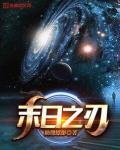Volume 3: Dance of the Aurora Chapter 16 Von Neumann Detector
After Observer No. 1 came to the solar system, he has been organizing the data collected from the Kuiper Asteroid Belt, where the information density is much higher than that on Earth.
Whenever observers arrive at a star system, they prioritize checking gas planets and asteroid belts because the probability of life arising there is much higher than on solid planets like Earth.
Human beings born on Earth and carbon-based organisms with similar structures are rare miracles in the universe.
Under the pull of the gravity of Jupiter and the Sun, hundreds of thousands of planetesimals in the asteroid belt have been colliding and entangled with each other for billions of years, and a very sophisticated structure has already been formed inside.
This does not include interactions between smaller debris and dust.
There is no essential difference between this delicate structure shaped by the hand of nature and life with independent consciousness and self-replication. Perhaps after another "collision" or any form of activation, real life will sprout from it.
But this time it was different. Observer No. 1 did not find any type of life in that vast sea of meteorites, not even the ubiquitous energy creatures.
From the perspective of cosmic biology, this kind of silence is very abnormal. Observer No. 1 judged that the asteroid belt may have been attacked or shielded. It is almost certain that some alien intelligent individuals have performed some kind of operation on it, and the purpose of this operation is still unknown to him.
He searched for clues of ancient civilization in space, but could not find any useful information, which meant that the other party's technological level was likely to be higher than theirs.
According to the current technological level of metal civilization, even if it costs a lot to directly manipulate space and local physical constants, it is unlikely to be as flawless as it is now.
Of course, there is another possibility, that is, the anomaly here is not the result of forced intervention by other cosmic civilizations, but a side effect of some kind of distortion of space itself. However, this possibility is much more dangerous than the possibility that other civilizations have come.
Observer No. 1 felt a wave of fear, but this time he hid his emotions very well, and his companions did not seem to notice anything unusual.
"By the way, are you almost reaching the end of your self-replication cycle?"
"Oh, yes, it's almost time."
In fact, this rhythm rooted in their bodies does not need to be reminded by others. Keats felt that Observer No. 2 might want to say something to break the peace.
Just like humans, they are social animals who need to exchange information and share emotions with their companions.
He stopped what he was doing and searched the planets in the solar system for materials that could be used to build a new brain. In fact, it would be enough to just look for ready-made materials among the debris on Mars.
The originally bizarrely shaped rocks broke apart in space, and the metallic color gradually emerged from them. The scattered particles flew in the air along a certain strange trajectory, and finally merged together. The combined flakes rolled in the universe, showing a complex circuit under the directional impact of cosmic rays.
After what was a long time for humans, a new life was born deep in the solar system.
Unlike his cousins on Earth, he was born with the most basic body structure, learned the basic ways of perception and movement, and had his first conversation with his own kind:
"Doo-Do-Doo-Do-"
"Doo-Do-Doo-Do-"
"Doo-Do-Doo-Do-"
"Electromagnetic wave absorption is normal...mental circuit is normal..."
Observer No. 1 turned over his "child" as if he were looking at a new mobile phone, as if he had no feelings for this new life that was created based on his own structure.
In fact, according to human standards, Observer No. 1 already has many children and grandchildren, and has spread countless descendants throughout the vast universe. In terms of seniority, he has already become a great-great-great-grandfather.
"Number '662607-42-2718', initial function check completed, applying to join the sequence."
The 662607 in the number refers to the "generation" of the new life, in other words, which replication they were produced after counting from the original split. The 42 refers to the number of observer No. 1 among his peers, and the 2718 means that this new life is the result of the 2718th self-replication of the individual Keats since his birth.
In their civilization, all new lives are given such a number, which indicates their position in society.
In fact, cosmic exploration and self-replication are the basic requirements of their social structure for individuals. If there are no restrictions, the size of this civilization will grow exponentially until they extend their tentacles to every corner of the universe.
Of course, no limits are impossible. In order to maintain its own structure, civilizations always have boundaries in the universe.
In the 1950s, Fermi proposed a very famous paradox in an informal scientific discussion: according to the scale and age of the universe, even if intelligent life has a very small probability of appearing on planets, there should be a considerable number of civilizations in the Milky Way alone.
Given the need for intelligent life to overcome resource limitations and the desire to expand, any advanced civilization would likely seek out new resources and explore the space near them, perhaps even setting foot in surrounding galaxies.
But 13.7 billion years after the birth of the universe, we humans have not found any solid and reliable evidence of the existence of other intelligent life on Earth or anywhere else in the observable universe.
As for how possible advanced civilizations will explore the universe, another more famous scientist gave his own answer. His name is John von Neumann.
In his vision, advanced civilizations in the universe would build a probe that could multiply . After being launched into deep space, this probe would use the resources around it to replicate itself, generation after generation, and eventually reach the deepest part of the universe.
If we accept the von Neumann probe view, the Fermi paradox can be explained. Since self-replicating probes will consume energy and mass in the universe uncontrollably, any advanced civilization will not build them in the first place, and will immediately destroy the probes launched by other civilizations after discovering them.
It now appears that the scientific pioneers who thought about the issue of aliens had overlooked a very important possibility, that is, the probe is an individual iron-based organism itself.
They do not replicate themselves infinitely, nor do they expand randomly across the universe in an irrational way. They not only have a rational spirit, but also a sophisticated social structure and a technological level that is much more advanced than that of humans.
They have actually arrived on Earth a long time ago, but we just don't have the ability to sense their presence.






